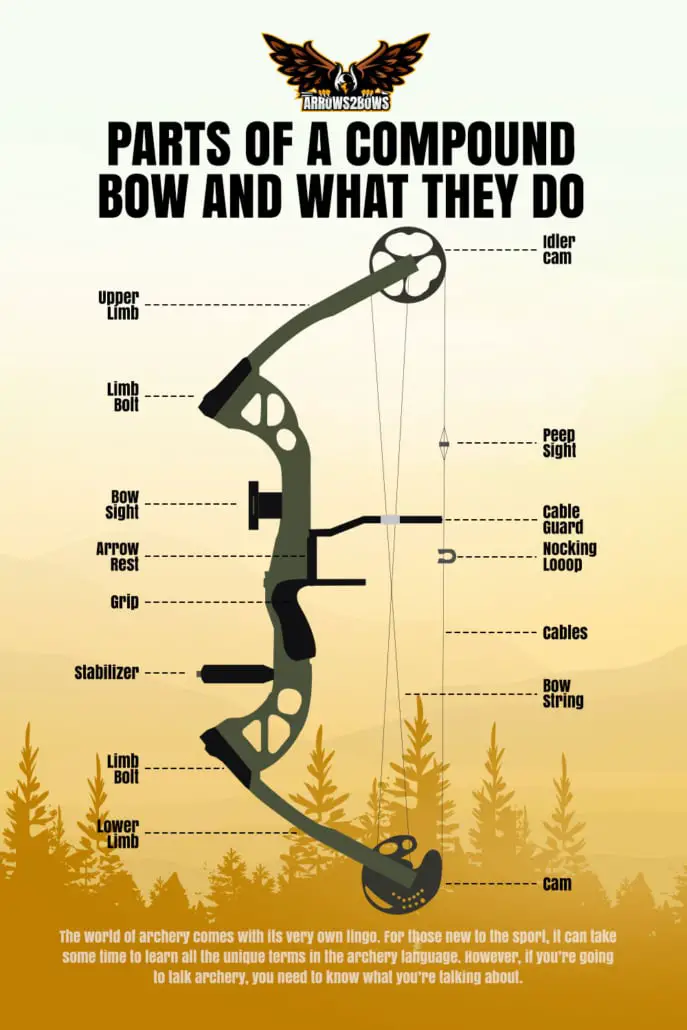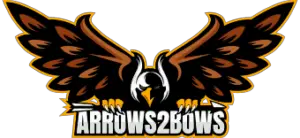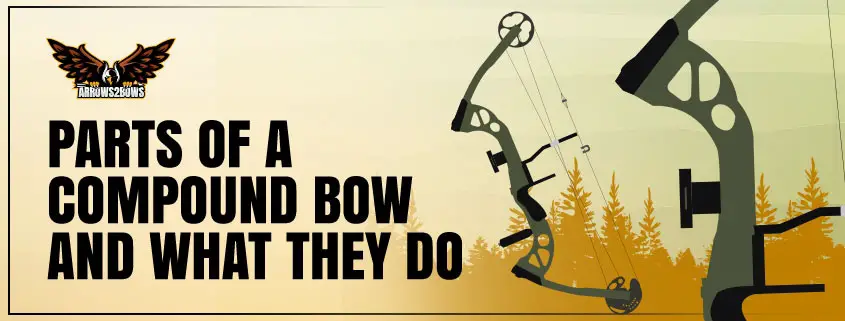Parts of a Compound Bow and What They Do
The world of archery comes with its very own lingo. For those new to the sport, it can take some time to learn all the unique terms in the archery language. However, if you’re going to talk archery, you need to know what you’re talking about.
We’ve designed this article as a kind of crash course in the anatomy of compound bows. Not only will it help you label and identify the parts of a compound bow, it will also help you better understand how the parts work together.
Knowledge is power, so let’s dive in and gain a better understanding of the various parts and components of the modern compound bow.
The Riser
We’ll start with the riser because it is the main body of the bow. The riser is the middle part of the bow and functions like the body’s backbone, providing support and stability for all the other parts.
Risers on most modern compound bows are made of aluminum, magnesium alloy, or carbon fiber. Aluminum is the more economical option. However, carbon fiber is more durable, flexible, and lightweight.
The riser contains the grip (where you hold the bow) and the arrow shelf (just above the grip, the shelf can be used in place of an arrow rest). The riser is also where accessories like sights, stabilizers, arrow rests, and quivers are mounted.
The Limbs
The limbs are the flexible pieces attached to the top and bottom of the riser. These pieces are constructed of fiberglass-based composite materials that are supple, bendable, and capable of withstanding high tensile force.
Limbs store the energy generated when the string is pulled back. That energy propels your arrow forward when the string is released.
Modern compound bows feature one of two basic limb styles – solid or split.
Solid limbs are fashioned from a single piece of fiberglass.
Split limbs are basically two thin limbs attached to each end of the riser. Split limbs are more durable than solid limbs. They also produce less hand shock (the vibration and “jumping” felt in the hand upon arrow release), making them much more comfortable to shoot.
What are Parallel Limbs?
Parallel limbs are more of an orientation than a separate limb style. When you hear someone refer to a compound bow with parallel limbs, the bow probably has split limbs with a special orientation. Parallel limbs are split limbs attached to the riser so that the top and bottom limbs run parallel to one another.
In the not so distant past, compound bows had the traditional “D” shape most people associate with a bow. Walk into an archery shop today, and you’ll be hard-pressed to find that D shape outside of the kids’ section. Most modern compounds feature a parallel limb structure, which looks more like a bat wing than the letter “D”.
Orienting the limbs so they run parallel causes them to flex up and down, rather than back and forth. This design almost eliminates the jumping or jerking hand shock common with more traditional limb orientations. This relatively new design seems to be here to stay and makes for whisper-quiet, dead-in-the-hand shooting.
Limb Pocket and Bolts
The limb pocket is where the limbs attach to the riser. Some limb pockets are machined, which makes them more accurate, especially at longer distances.
Limbs slide into the pocket and are each secured with a limb bolt. When the bolts are tightened, the bow’s draw weight increases. On most models, turning the limb bolt clockwise with a hex screwdriver increases draw weight. Turning the bolt counter clockwise decreases the draw weight.

The Cams
Cams are the pulleys or wheels attached at the end of the limbs. Cams are what distinguish a compound bow from more traditional bow types.
The further you draw a traditional recurve or longbow, the harder it gets to pull. When you pull the string back on a compound bow, the cams mechanically manipulate the draw weight. Once you reach a certain point, it becomes noticeably easier to draw the bow as the cams do some of the work for you.
The spot in the draw when it gets easier to draw is called the breaking point. Although it requires less effort to pull the string beyond the breaking point, the limbs maintain the same amount of stored energy you would have with a traditional bow.
The shape of the cams affects the bow’s stored energy, which in turn affects the arrow speed the bow generates. Cam shape can also affect the bow’s let-off. Let-off is the mechanical relaxation of string tension. It reduces the amount of weight you have to hold at full draw.
Let-off is calculated as a percentage of the overall draw weight. For example, a bow with a 50-pound draw weight and an 80 percent let-off has you holding ten pounds when the bow is fully drawn.
Types of Cam Systems
The cam system is how the two individual cams work together. Today’s compound bows generally feature one of four different cam system styles – single, hybrid, binary, and twin. Each style has its own set of pros and cons.
The Single Cam System
Bows with a single cam system (sometimes called One Cam or Solocam) have one round wheel at the top and an oblong power-cam at the bottom. A single cam compound bow generally shoots quieter than its twin cam cousins. Single cams are also easier to maintain since they do not require cam synchronization. This means they are less likely to go out of tune, and when they do, it doesn’t affect arrow trajectory that much.
The major drawback of single cam bows is their slower arrow speeds.
Not all single cam systems are created equal. Some offer a smooth draw cycle; others are pretty aggressive. Overall, single cam systems have a reputation for being reliable, easy to maintain, accurate, and having a solid back wall.
The Twin Cam System
Compound bows with a twin cam system (also known as a Two Cam or a Dual Cam) feature two perfectly symmetrical wheels. The wheels can be round or elliptical, but both cams look the same.
Twin cam systems generate faster arrow speeds and generally deliver better accuracy than single cam systems. However, they tend to be noisier and are much more difficult to maintain than single cams.
The Binary Cam System
Introduced by Bowtech Archery in 2005, the binary cam system is a modified twin cam system that slaves the top and bottom cams to each other with two “cam-to-cam” control cables. This allows the binary cams to work as a self-correcting system, neutralizing some of the tuning issues prevalent in the standard twin cam system.
The Hybrid Cam System
Bows with a hybrid cam system are constructed with two asymmetrical oblong wheels. A control cam is attached to the top limb, while a power cam is attached to the bottom. The hybrid system is equipped with a single split harness, a control cable, and a main string.
Although hybrid cam compound bows are far from maintenance-free, they do require less maintenance and tuning than bows with twin cam systems. In general, hybrid cams produce blistering arrow speeds without generating excessive noise, making them a popular choice for bowhunters.
The Axles
The axles on a compound bow work just like the axles on your car. They are the shaft on which the cams rotate. The distance between the two is often referred to as axle to axle (ATA) length. The average modern compound bow has an ATA of about 30 inches, although some are as short as 18 inches. Longer ATA compound bows tend to be more forgiving and have a smoother draw cycle. A shorter ATA bow will be generally easier to maneuver and generate faster arrow speeds.
The Bowstring
This is the string where your arrow is nocked. You pull the bowstring back when you draw the bow, and it propels the arrow toward the target when released.
Although the earliest bowstrings were made from animal sinew, the strings on modern compound bows are made from synthetic materials that resist stretching over time. Modern bowstrings are resilient. However, they should be waxed regularly to prevent fraying and protect them from regular wear and tear.
D Loop
You may choose to add a D loop to your bowstring to connect a mechanical release. The D loop is a small piece of cordage attached to the bowstring by cinch knots. The D loop is attached above and below the nocking point and resembles the letter “D”.
Peep Sight
The peep sight is basically a hole in your bowstring that provides a clear line of sight between your eye, sight pin, and target. Usually made of plastic, a peep sight is installed by separating the strands of your bowstring and slipping the peep through the hole. The peep sight is then tied with string to hold it in the proper position.
The Cables
The cables run from cam to cam and help them rotate properly when the bow is drawn. Just like your bowstring, the cables need to be waxed to keep them in good working order.
Cable Guard
Usually made of plastic or fiberglass, the cable guard runs perpendicular to the riser. The cable guard helps prevent the arrow from contacting the cables when it is released.
Cable Slide
The cable slide is a small plastic piece mounted to the cables and attached to the cable guard. It works with the guard to keep the cables out of the arrow’s flight path.
Arrow Rests
As the name suggests, an arrow rest is the place you set your arrow when you load the bow. There are a variety of arrow rests to choose from. They range from the very simple to the mechanically complex.
The Containment Arrow Rest
A common choice for beginners is the containment rest. A containment rest surrounds the arrow and holds it in place until you shoot, allowing you to focus on your target rather than balancing your arrow. The best known brand is the Whisker Biscuit. In the world of archery, the term Whisker Biscuit is almost synonymous with containment rests, although there are different brands on the market
The Drop Away Rest
Popular among bowhunters, the drop away rest falls or drops out of the arrow’s path shortly after release. When installed properly, a drop away rest should have minimal contact with the arrow’s fletchings. This helps preserve arrow speed and accuracy. However, because it is a mechanical device, a drop away rest has moving parts that could malfunction in the field.
The Launch Rest
The prong style launch rest is a favorite in competitive target archery. These arrow rests are fine-tuned for shot alignment and have minimal contact with the arrow.
Bow Sights
A bow sight is an adjustable aperture with an aiming pin (or pins) that attaches to the riser. You use the pins to aim, lining them up with your peep sight and the target.
Types of Bow Sights
There are a ton of different bow sights on the market. Some are designed for precision target shooting, while others suit the unique needs of the bowhunter. Here is a quick rundown of the most common types of bow sights available to modern archers.
Fixed Pin Sights
Fixed pin sights are the most common type of bow sight, probably because they are versatile, easy to use, and fairly affordable. When used properly, they are also highly accurate.
A fixed pin sight consists of multiple pins of different colors. Depending on the model, the sight may have as few as three or as many as five pins. While more pins allow you to aim more precisely at varying distances, the more pins in your sight, the more cluttered your sight picture and the more difficult it can be to aim.
You adjust each pin for a specific distance (usually measured in yards). Once set, the pins are locked into place to prevent them from shifting when you shoot. Once your sight pins are set they deliver precision accuracy (when used with good shooting form) at the distance for which they are set. Shooting the distances between your pins can be tough, however, and you’ll need to learn to compensate for those in between distances.
Movable or Single Pin Sights
A movable sight has one single pin. Instead of adjusting the pin to aim at different distances, the entire pin housing slides up or down to correspond to your shooting distance. Most single pin sights have marked tape that allows you to easily adjust the sight for each shot.
Pendulum Sights
Although most pendulum sights use a single pin, they have one additional feature that sets them apart from the standard single pin sight. Pendulum bow sights have the pin mounted on a pendulum inside the sight bracket. As the bow angle drops, the pendulum swings up outside of the bracket to compensate for the odd angle.
Perfect for bowhunters who shoot from elevated treestands, pendulum sights provide better accuracy when shooting at extreme downward angles.
Competition Sights
Also called target sights, competition sights offer a ton of features. Designed for high-stakes competition and precision shooting, target sights allow for wind and elevation adjustments. Depending on the model, they may also incorporate a laser or other technologically advanced aiming tool.
Although competition bow sights are extremely accurate, they are also bulky and relatively expensive. They can also be complicated to set up and use properly.
Stabilizers
A stabilizer is an optional rod that attaches to the front of your riser. As the name implies, it helps stabilize your bow by acting as a counter balance. Some models are also designed to help minimize noise and vibration.
Vibration Arrestor
The vibration arrestor is made of rubber and works to dampen vibration for quieter shooting. It is attached to the riser and sits close to the bowstring when the bow is at rest.
Sling
A sling slips around your wrist and helps prevent the bow from falling forward and hitting the ground when you release the string.
Mechanical Release
Although your release isn’t technically part of your bow, it can be essential for proper shooting. Most models have some sort of clip that attaches to your bowstring or D loop. Using a mechanical release helps you shoot more consistently, resulting in increased accuracy. The most common types of mechanical releases are the trigger release, thumb release, and back-tension release.
Quiver
Some archers choose to attach a quiver to their riser. This accessory holds your arrows and keeps them easily accessible. A quiver can also help protect your arrows from the elements and keep sharp broadheads safely contained.
Conclusion
Compound bows have revolutionized the world of archery. While they are more complicated than traditional bows, they more than make up for it in power, shootability, and arrow speed.
The information in this article should help give you a better understanding of the parts of a compound bow, as well as how they work together when you shoot. As you dive deeper into the sport, you’ll find plenty more to explore.
[ABTM id=2603]



